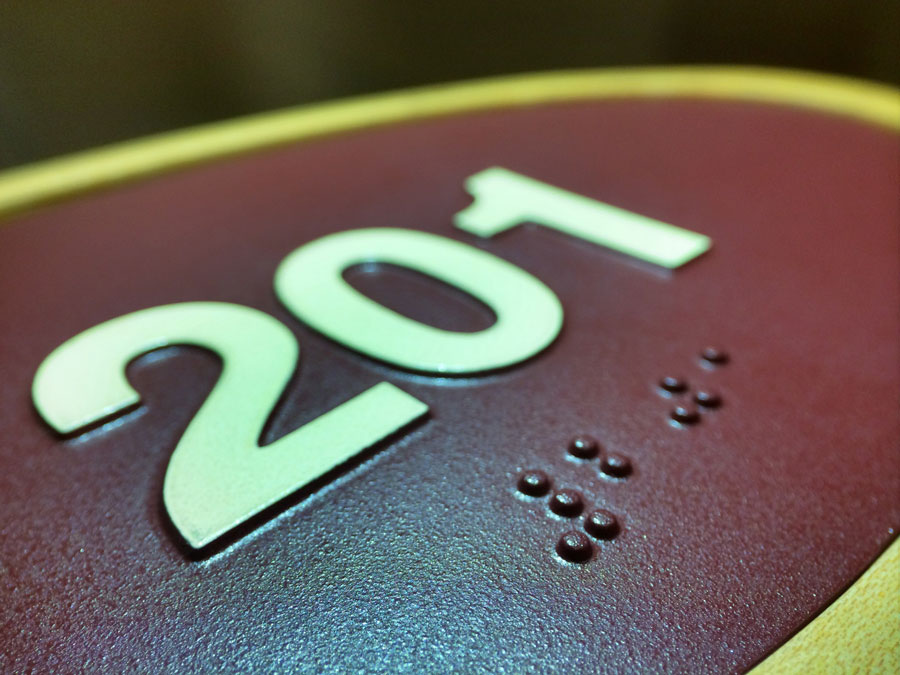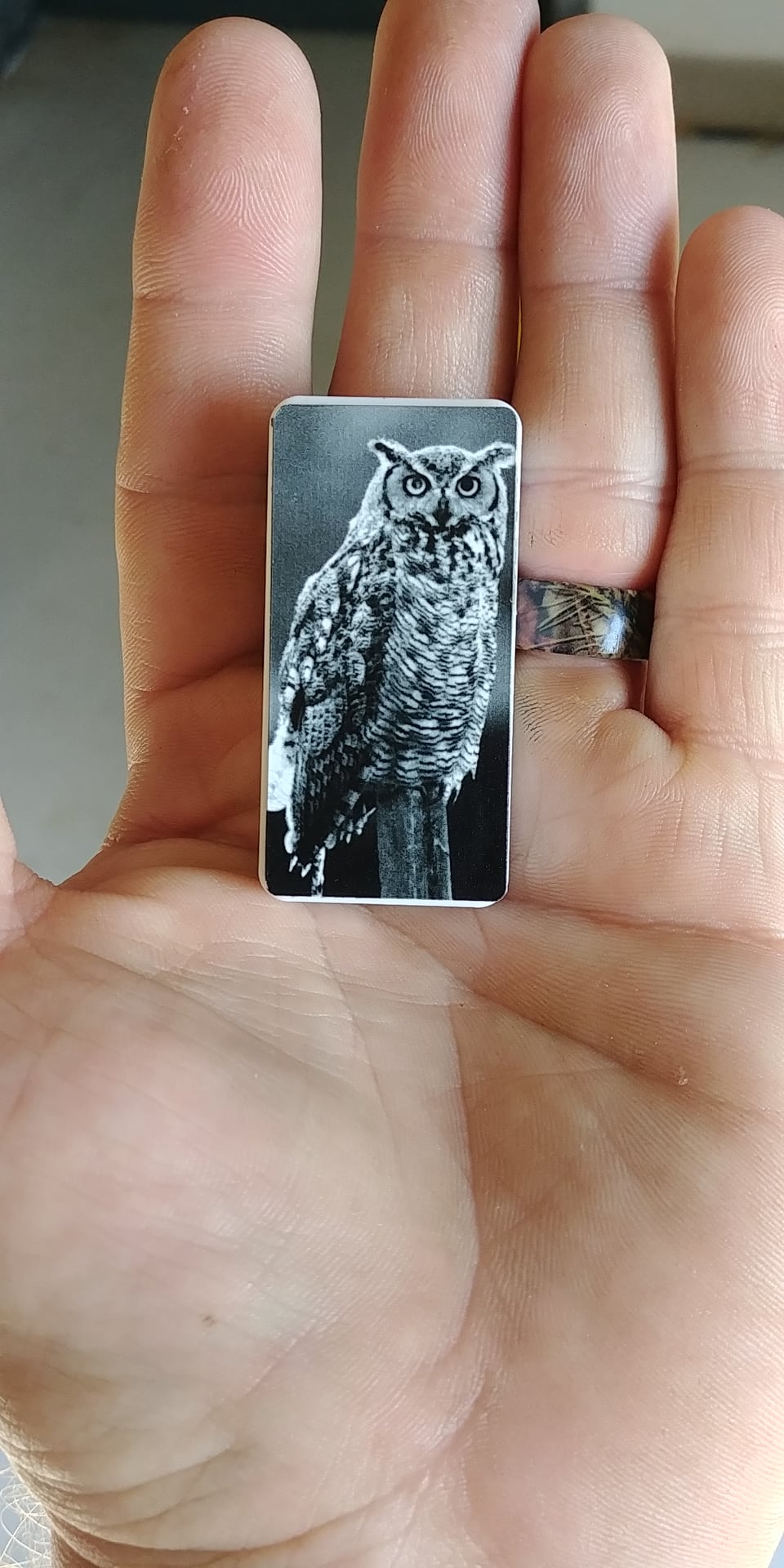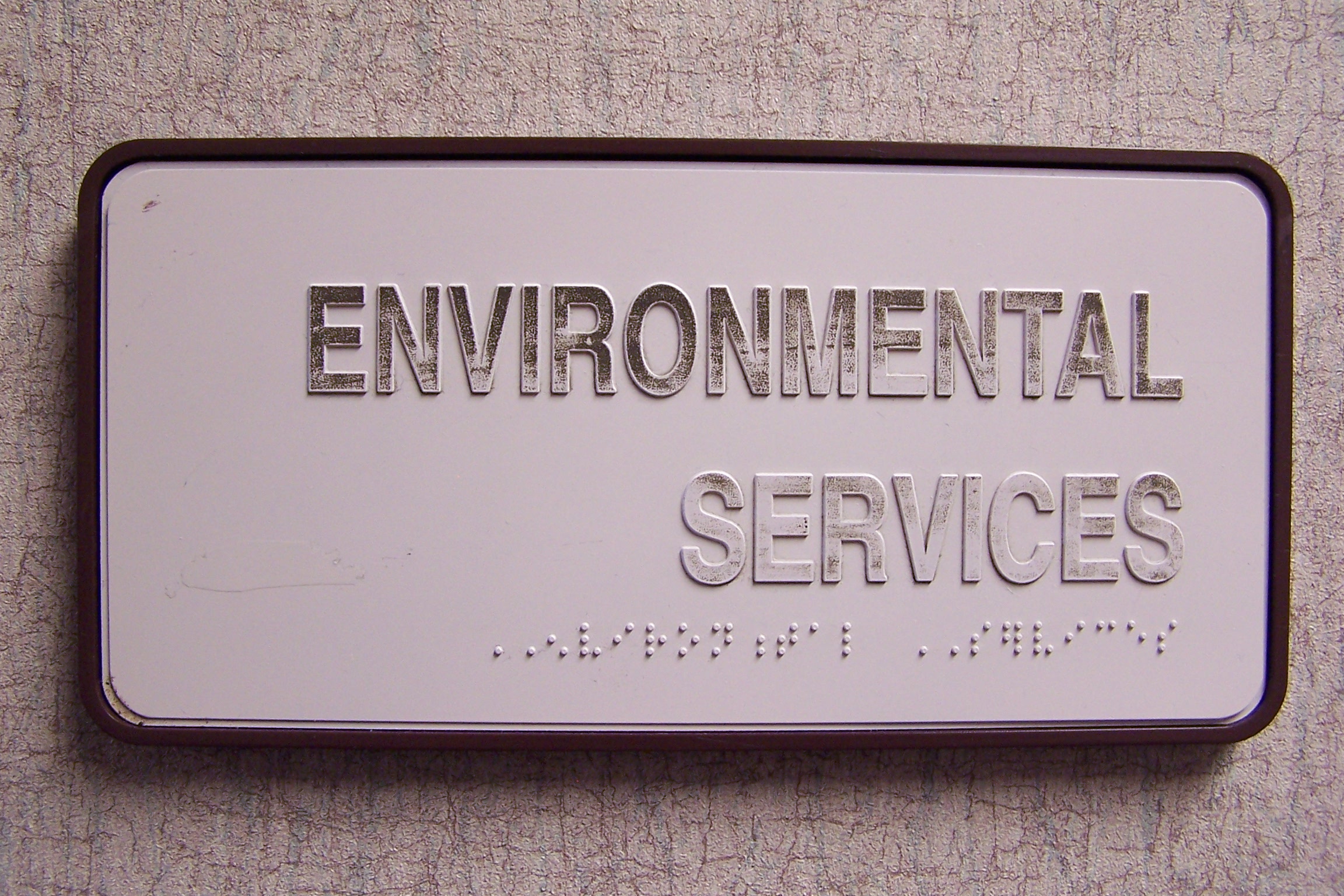Photopolymer Vs UV Digital Print
Digital Print versus Photopolymer!
The photopolymer process has been around for a long time and has been a highly requested process in the sign industry for decades by architects and designers alike. Photopolymer was introduced to the sign industry decades ago as a more durable and tamper proof option for interior signage and provided more color and design options than were currently offered at the time.
Technology continuously changes and improves, and new options come into the market that give sign fabricators different options for sign production. One such newer option is direct UV digital printers. These direct UV printers were designed to be a direct competitor to photopolymer but with faster turn-around times and more functionality. But is it better than photopolymer? We are going to dive into some of the differences between these two process and what advantages and disadvantages each process has.
Photopolymer
The photopolymer process uses a polymer material that cures when it is exposed to light. To make a photopolymer sign, an associate starts with a piece of material such as acrylic. The acrylic is placed into a machine and covered with the polymer material. Then a negative is created and placed on top of the polymer material which is then exposed to light which cures the exposed polymer. When you think of the negative, think of a stencil with the letters and braille cut out and the rest is covered. The acrylic is then washed off which removes the un-cured polymer that was protected by the solid area of the stencil leaving behind only the exposed text, braille, and pictograms.
The material is then placed into a dryer for about 15 minutes, removed and cured one more time for about 5 minutes. Then you are left with a piece of clear acrylic which is made up of the acrylic backplate and the letters and braille that came from the polymer sheet. At this point the entire sign will be painted either first surface or second surface depending on the design intent of the sign.

Since we know that the letters must contrast with the background a color must be added to the text and this can be accomplished a couple of different ways. First option is a hot stamp process where a color ribbon is placed over the text or pictograms and heat is applied to the ribbon which transfers the color to the face of the letters from the ribbon. The second option is a screen-printing process where the sign is placed under a screen and all but the letters are covered. Paint is smeared over the screen; the screen is placed over the sign and then the screen is rubbed on top of the letters to apply the paint to the top of the letters. Once the color has been applied then the sign is clear coated in a satin finish to give it a non-glare finish.

Direct UV Digital Printer
The newcomer to the sign industry is the direct UV digital printer. This is designed to replicate the look and durability of photopolymer but uses a different production process to achieve the look.
To UV print raised text and braille on a sign you must first start with a sign blank which is typically made of acrylic but can be made of a variety of materials. The blank is cut to size on laser or a CNC router and in some cases may be cut on a shear. The blank is then placed on the bed of the direct UV printer and then an adhesion promoter is applied to the face of the material. Some materials are already digital print ready in which case no adhesion promoter is required. The raised text and braille file are then sent over to the machine and the printer works similarly to a laser printer where the print head moves back and forth over the material putting down ink.

The direct UV printer puts down layers of clear ink until the thickness of the ink reaches the 1/32” required raised text thickness and then the desired color is applied to the top and edges of the letter/pictogram. The ink is UV cured as it is being applied for durability and the ink can be touched immediately after the printing has stopped. The printing process takes only 4-10 minutes per sign depending on how much printing is done on the sign.
Comparison
One reason that photopolymer is specified is that architects and designers are looking for raised text that is more tamper proof. Tamper proof text works well in places like high schools where mischievous teenagers enjoy picking the letters off the signs and this is where a process like photopolymer is better than applied raised text. Applied raised text is adhered to the sign using a very strong time bonded (adheres stronger over time) double-sided tape. It sticks well but can still be peeled off with a fingernail if one were motivated to do so.
The direct UV printer is also tamper proof. The ink from the printer is bonded to the acrylic using a UV cure which means that just like the photopolymer process, the letters cannot be easily picked off the sign. Are direct UV digitally printed signs completely tamper resistant? Of course not, neither direct UV digital printing nor photopolymer is completely tamper resistant. What we tell our customers is that the text is very durable and cannot be easily picked off, but once you take a knife or a tool to it, anything can be removed or tampered with.
Some advantages that photopolymer has over direct UV is that it has been around a lot longer. Also, the upfront machine cost for photopolymer can be less than that of direct UV digital printer. However, the direct UV printer can produce the products faster allowing you to make up the price difference in completed finished product. Another big advantage is that the direct UV printer can also print a lot of other products such as t-shirts, glass, metal and if you have the right attachments for the printer you can print on bottles or golf balls which allows you to expand your product offering to more than just ADA signs.

One disadvantage to direct UV digital printers is that if you are not using a digitally printable material you must use an adhesion promoter to make sure you have good adhesion between the letter and the blank. This step does not take very long to do but in our experience the adhesion promoter slightly changes the look of the sign, so if you need to use it, you have to cover the entire sign to ensure the face looks uniform. Also after applying the adhesion promoter you cannot touch the face of the sign for a little while after the sign is printed or you may leave fingerprints on the face of the sign. Applying adhesion promotor does add a little time to the process but there is an abundance of digital print ready material and as UV digital printers become more widely used there will surely be more material options.
A disadvantage of photopolymer has been durability of product. We have run across a lot of photopolymer signs over the years that have issues with the paint coming off the text which causes the sign to be non-compliant with ADA law. Another issue that was common with photopolymer is the braille is not domed as it is supposed to be per ADA signage requirements. Some photopolymer machines have resolved this issue and their braille is now domed but it is something to continue to look out for.

Conclusion
So, the question remains, is the new direct UV process better than the photopolymer process? This question is as tough to answer as which is better Samsung or Apple, they each have their own strengths and weaknesses, and both are good products, but one may fit your needs better than the other.
When Avalis made the decision between the two processes, we went with the direct UV printer for a couple of reasons. First, the production process with direct UV printing is faster and less labor intensive than photopolymer. Second, it allows us a lot more production options than photopolymer. Although we do not print on t-shits, golf balls, or bottles, we do digitally print a lot of products and the detail and clarity of the direct UV printer is unbelievable! We use our UV printer almost every day.
The answer to which process is better is up to you. I think you must ask yourself, what do I plan to do with the equipment, and what processes do I need the equipment to do for me?
Timm Sparks
10/2020

